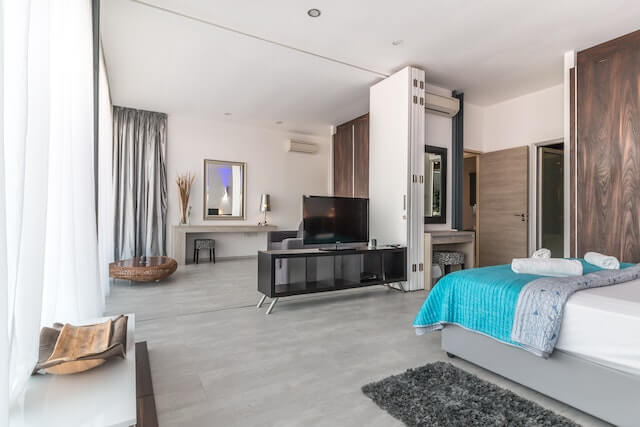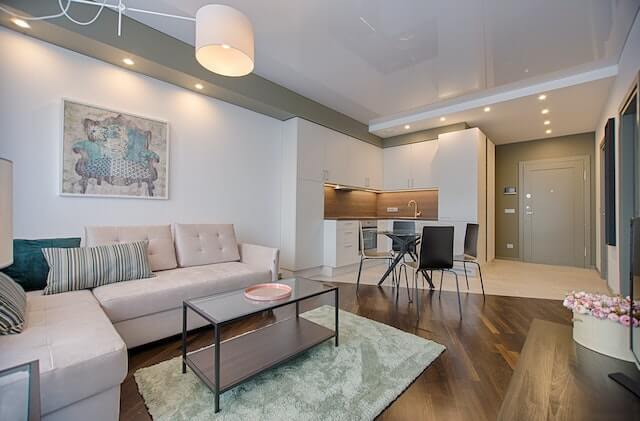Renting out fully furnished properties is a strategic decision that comes with both advantages and potential challenges. While furnishing a rental property can attract specific tenant demographics and yield higher rents, it also requires careful consideration to protect the landlord’s assets.
Aside from knowing the benefits and consequences of renting fully furnished properties, a landlord should also know the crucial lease agreement considerations that they should prioritize to ensure a successful rental experience.
The Benefits of Renting Fully Furnished Properties
Attractive Rental Income Potential
Furnished properties often come with a higher rental income potential compared to their unfurnished counterparts. The convenience of moving into a fully equipped living space appeals to tenants who value a hassle-free transition. Landlords can capitalize on this demand by setting competitive rents that reflect the added value of furnished accommodations.

Targeting Specific Tenant Demographics
Furnished rentals are particularly appealing to individuals who are relocating, students, or professionals seeking temporary housing solutions. The convenience of moving into a pre-furnished space eliminates the need for tenants to purchase or transport furniture. This targeted approach can lead to a more stable tenant pool, especially in areas with high demand for short-term housing.
Reduced Vacancy Periods
Furnished properties can lead to shorter vacancy periods in the rental market. The ability to offer an immediate and comfortable living environment can attract tenants who are looking for a quick move-in option. By presenting an attractive and move-in-ready space, landlords can minimize downtime between tenants and maximize their rental income.
Savings on Storage Costs
By offering a fully furnished property, landlords can eliminate storage costs associated with storing furniture and appliances when a property is vacant. This cost-saving benefit contributes to the overall financial viability of furnished rentals, enhancing the return on investment.
The Consequences of Renting Fully Furnished Properties
Higher Wear and Tear
Furnished properties are prone to experiencing more wear and tear due to increased usage of furniture and appliances. This can result in more frequent maintenance and replacement costs. When determining rental pricing, landlords should consider these potential expenses to ensure that maintenance costs don’t overshadow the higher rental income.
Potential Tenant Turnover
Furnished properties may attract shorter-term tenants, leading to higher turnover rates. Frequent tenant turnover can result in increased vacancy periods and administrative efforts related to finding new tenants. Landlords should carefully assess whether their target market aligns with the turnover rates associated with furnished properties.

Insurance Considerations
Landlords must ensure that their insurance coverage includes protection for furnishings and appliances. Standard rental property insurance may not cover damages or theft of furnished items. Landlords should consult with insurance providers to understand the coverage options available for furnished rentals.
Lease Agreement Considerations for Protecting Assets
When renting out furnished apartments, a detailed lease agreement is your best friend. By paying special attention to inventory lists and furniture maintenance requirements, you can set up clear expectations, eliminate risks, and create a solid foundation for a successful landlord-tenant relationship.
Comprehensive Inventory List
Include a detailed inventory list of all furnishings, appliances, and items included in the rental property. Go the extra mile and list down each item as well as the brand, model, and approximate price. Document the condition of each item before move-in and require tenants to acknowledge the accuracy of the list. This comprehensive approach provides a clear reference point for both landlords and tenants.
Higher Security Deposit
Tenants are required to pay a sum of money known as a security deposit at the beginning of a lease, which acts as a safety net for landlords. It acts as protection against potential losses, excessive wear and tear, and unpaid rent during the length of the lease.
Set a higher security deposit for fully furnished rentals to account for potential damages or losses. Clearly outline how the deposit will be used to cover repairs or replacements if needed. A higher security deposit helps safeguard against potential damages and reinforces tenant responsibility.
However, a landlord must make sure that the amount of the security deposit as well as how it is handled does not violate local regulations.
Maintenance and Repairs
Specify tenant responsibilities for maintaining and repairing furnished items. Outline acceptable wear and tear and provide guidelines for reporting damages.
For instance, you may state that the tenant is responsible for frequently dusting and cleaning the furniture, such as wiping down surfaces and vacuuming upholstery to keep them spotless.

In an emergency, such as a plumbing problem, tenants should be made aware of their responsibility to report any leaks or damaged fixtures right soon. For instance, if a faucet handle breaks loose or a toilet keeps running, tenants should call you right away so that you may make the necessary repairs to prevent further damage.
By establishing expectations around maintenance and repairs, landlords can prevent disputes and ensure the longevity of furnished items.
End-of-Lease Conditions
Clearly define the condition in which the tenant is expected to return the furnished property at the end of the lease. Outline any charges for missing or damaged items beyond normal wear and tear. This clarity ensures that both parties are on the same page regarding property expectations at the end of the tenancy.
Tenant Insurance
Consider requiring tenants to obtain renters’ insurance that covers damages to furnished items. This additional layer of protection benefits both landlords and tenants. Requiring tenant insurance helps mitigate potential disputes and ensures that damages are appropriately covered.
Renting fully furnished properties presents landlords with both opportunities and challenges. By incorporating key lease agreement considerations into the rental process, landlords can safeguard their assets and ensure a positive landlord-tenant relationship.
Once your furnished property is ready for occupancy, your rental agent can start marketing it. Padleads offers a comprehensive platform for them to connect with potential tenants. With Padleads, landlords and rental agents can create compelling listings and syndicate them across a network of high-traffic websites, enhancing visibility and attracting qualified tenants. Utilizing Padleads empowers rental agents to effectively showcase furnished rental properties and find ideal tenants.